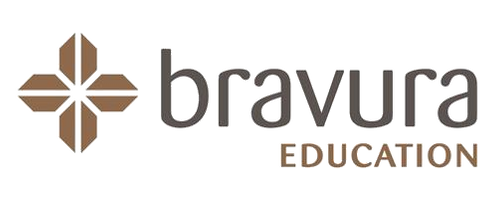
Enhancing patient care through laser technology: improving outcomes and recovery
Laser technology is defining modern surgery by allowing surgeons to work with unprecedented precision and minimal tissue trauma. In the field of surgical care, lasers offer enhanced precision, reduced recovery times, and improved patient outcomes.
Because laser energy can cut or ablate tissue so accurately, surgeons achieve smaller incisions and finer control than with traditional tools.
This minimally invasive surgery approach means less bleeding, lower infection risk and faster wound healing – all of which translate to shorter hospital stays and quicker patient recovery. For example, laser-assisted procedures let doctors target only the diseased tissue and spare surrounding structures, reducing collateral damage and promoting better outcomes.
Precision and Minimally Invasive Laser Surgery
Perioperative suite teams use specialised microscope-guided lasers for detailed soft-tissue surgery. The precision of laser technology allows surgeons to target specific tissues with minimal damage to surrounding areas, drastically cutting the risk of complications during and after surgery
In practice, this means surgeons can perform minimally invasive surgery through tiny access points. Smaller incisions (often just a few millimeters) lead to far less trauma and scarring. Patients benefit from smaller incisions, leading to less trauma, quicker recovery, and, ultimately, better survival outcomes
With lasers, even complex tasks like tumor removal or delicate reconstructions become more accurate – improving functional and cosmetic results. Studies show that the greater accuracy of laser surgery improves surgical outcomes and reduces complications compared to traditional methods
Accelerating Recovery and Safety
Because laser energy seals blood vessels as it cuts, procedures often involve far less blood loss and swelling. The result is a much more comfortable recovery. Lasers tend to cause less tissue damage, reduced pain, and faster recovery, as reported in clinical studies. In practical terms, patients experience shorter recovery times and can begin rehabilitation sooner. The reduced physiological stress means patients return home quicker with less post-operative pain and fewer complications such as infections. Overall, laser-based techniques streamline care – safer, cleaner cuts mean that the wider multidisciplinary team can focus on recovery rather than treating preventable surgical trauma.
The Role of Laser Education and Safety Training
These benefits only materialise when surgical teams use lasers correctly. Extensive laser education and laser safety training are essential for safe outcomes. Australian Standards explicitly require rigorous training of all staff involved with medical lasers. Bravura’s evidence-based programs ensure every team member – nurses, technicians and doctors – understands laser physics, the signs of laser hazards, and safe work practices. In fact, Bravura’s position statement stresses that all staff in the perioperative environment should be trained in laser safety. Basic laser safety knowledge is the first step: any theatre staff who might come into contact with a laser must complete a Basic Laser Safety Course.
Beyond that, designated operators or managers take the advanced Laser Safety Officer (LSO) course. Well-trained teams know to appoint a qualified LSO or operator who enforces safety protocols and coordinates protective measures like eyewear, warning signage and plume extraction. Regular re-certification is also critical – ACORN (the national perioperative nurses’ association) recommends a refresher every five years. Ultimately, proper training (covering equipment use, hazard control and incident management) is what lets clinicians harness lasers to improve care without compromising patient or staff safety.
Bravura’s Laser Safety Courses
To support this training, Bravura Education offers flexible online courses. All are self-paced and CPD-accredited, meeting national safety guidelines. In particular:
Basic Laser Safety Course (Surgical) – An introductory 4-hour course covering fundamental laser physics, tissue interactions and hazard control. It’s designed for any nursing or medical staff in the OR who work near lasers. Learners study how lasers operate in surgery and learn essential safety protocols in short, easy-to-understand modules.
Laser Safety Officer (LSO)/User/Operator Course (Hospital/Medical) – An in-depth 8-hour CPD course benchmarked to AS/NZS 4173:2018 safe-use standards. This comprehensive program covers how different surgical lasers function and how to implement laser safety policies. It addresses use in specialties like gynaecology, urology, ENT, ophthalmology and more, ensuring laser users and appointed LSOs can meet all workplace health and safety responsibilities.
Refresher Laser Safety Course (Hospital/Medical) – A 6-hour modular update course for clinicians who have already done initial laser training. It refreshes your understanding of laser procedures and safety practices, reinforcing standards and new best practices. This refresher aligns with ACORN’s 5-year re-training recommendation and is ideal for teams maintaining compliance.
All of these Bravura courses are available anytime online. They are built on current evidence and aligned with Australian guidelines (e.g. AS/NZS 4173:2018 and ACORN perioperative standards). Because they’re delivered in modular, bite-sized lessons, staff can learn at their own pace. Group booking options and employer-friendly pricing are offered for five or more trainees. Contact Bravura Education today to arrange laser safety group training at your hospital, or enrol online now. Empower your team with certified laser safety officer education and enjoy the improved outcomes and patient recovery that safe, precision lasers can deliver.
Post Disclaimer
This blog post has been vigilantly researched and fact checked to ensure that it is accurate, reliable and up to date. You must keep in mind that errors and omissions may occur and that we welcome any feedback or corrections in this regard. We encourage you to do your own research to verify the accuracy and contemporary nature of the information presented.
